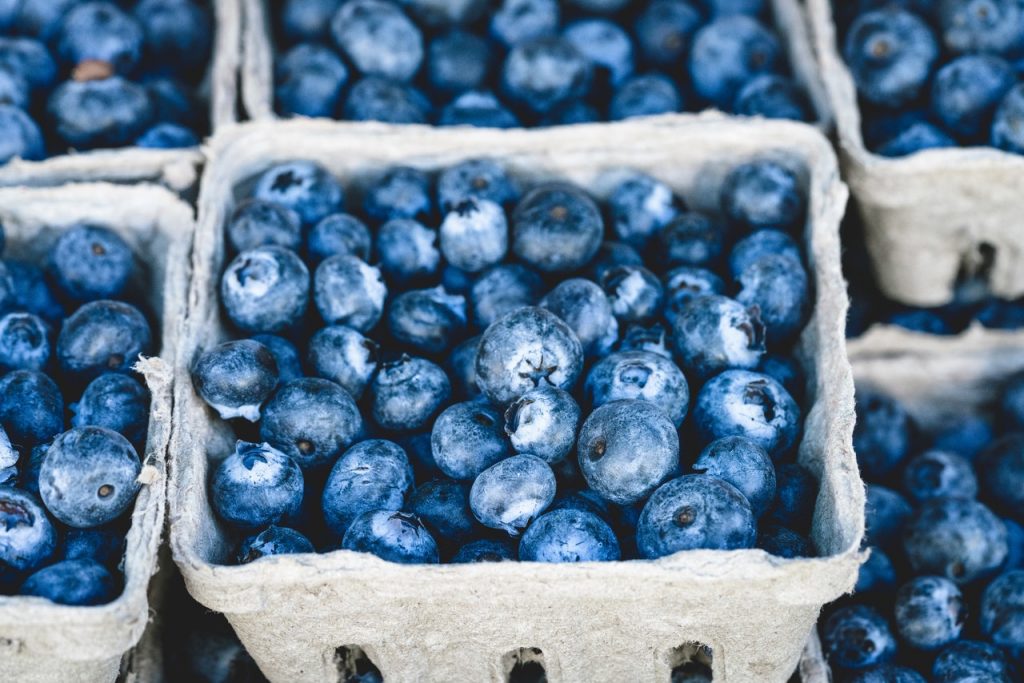
Home / Conditions / 6 Low Glucose Fruits to Add to Your Diet Today (And Why You Should!)

If you’re managing diabetes or high blood sugar levels, you’re probably going crazy sifting through all the contradictory information published on social media and in trendy magazines. Since childhood, you’ve been told that fruits are healthy. Eat more fruits! But then you figured out that fruit contains sugar, which is unhealthy. Did you grab a smoothie for lunch thinking you made a healthy choice? Think again (according to some fad diets).
You’re left scrolling through Google search results screaming, “What can I eat?” That’s how you ended up here, right?
Five Journeys is here to break down the situation with fruit, glucose, and blood sugar levels. There aren’t really any “bad” fruits. But it’s important to monitor your daily sugar intake. To help you, our nutritionists have selected six low-glucose fruits that you can enjoy without going over your daily amount of sugar.
You might begin to think that reducing or cutting out sugar is nutrition’s only goal. That can lead to serious problems!
In fact, nutrition should be part of a holistic wellness plan. The question we should be asking is, “What do our bodies need to thrive?” That’s the core of Five Journey’s diet and nutrition programs. It also answers the question of whether or not you should eat fruit.
Unless your doctor says otherwise, yes, you should eat fruit!
Fruit provides essential vitamins your body needs to function properly. Fruit delivers powerful antioxidants that keep you feeling young and energetic. You’ll receive healthy doses of fiber with fruit, and most importantly, fruit tastes great!
Most people can’t cut out all carbs and sugars, but they can avoid drinking soda and eating candy. With fruit, you can avoid added sugars and focus on consuming the right amounts of fiber and nutrient-dense carbohydrates from whole foods can help stabilize blood sugar levels.
Fruit is categorized as a low calorie density food. This means you can eat a relatively large amount of fruit without consuming a high amount of calories – at least compared to a piece of pie or a 32 oz. Coke. Eating a piece of fruit during a meal will keep you satiated for longer so you’re not tempted to eat a high calorie density food 30 minutes later.
One last thing before we get to the fruit list, but it’s an important point. You’ll notice sugar measurements next to each serving of fruit. But what do those measurements mean? Is three grams of sugar a lot? Is 30 grams of sugar a lot?
Here are the recommended levels of discretionary sugar intake health agencies recommend (by sex). Remember that discretionary sugar intake is less than total sugar intake, so if you want a more accurate answer regarding how much sugar you can consume in a day, consult with one of our Five Journeys nutritionists.
Strawberries go great with breakfast or in a small, homemade smoothie. There are only about 8 grams (g) of sugar in eight medium-sized strawberries, and they pack in a lot of vitamin C.
Few foods are as delicious as a fresh, late-summer peach. Just ask anyone from Georgia or Palisade, Colorado. Although they taste sweet, a medium-sized peach only contains around 13 g of sugar.
Blackberries provide a number of much-needed nutrients to the body, and this means that in moderation, blackberries won’t count against your discretionary sugars. Indulge in those nutritional, healthy fruits.
While not everyone loves the taste of honeydew, a slice contains only around 11 grams of digestible sugar. It’s a nice addition to a dinner or fruit salad. Honeydew melon also contains potassium, vitamin C, and iron.
Remember old-time cereal commercials? There always seemed to be a grapefruit on the table as part of a “healthy, balanced breakfast.” Tomorrow morning, cut open a grapefruit, grab your serrated spoon, and you’ll only be consuming 11 g of sugar.
Here’s one for the Millennials out there. Avocados are completely sugar-free and go great on toast, tacos, salads, and much more. They are also a good source of healthful fats and fiber.
Many people ask the Five Journeys team if they need to manage their blood sugar beyond eating a generally healthy diet. We know it can take extra energy to check whether a fruit is low-glucose or not. The short answer is that it depends on your current health situation. Sign up for an appointment at our clinic and we can determine what diet is right for you.
However, typical symptoms of high blood sugar include:
If you’ve noticed these symptoms cropping up, then perhaps you should consider replacing processed sugars with low-glucose fruits. Left unchecked, high blood sugar can lead to diabetes, heart disease, vision loss, and kidney disease. Staying in your target sugar intake range can also help improve your energy and mood.
At the end of the day, fruit is healthy. Eating the right fruits in moderation can have noticeable impacts on your health, from mood improvement to weight loss. We know nutrition can be a complicated journey to navigate, but that’s why the team at Five Journeys is here to help.
Start your health journey by taking our free health quiz!
Get free shipping.
Free Shipping
5% Discount


At home.
Blood and Urine
$179 – $439
Depending on insurance coverage.


This is a comprehensive stool test that relies on quantitative polymerase chain
reaction (qPCR) technology to detect parasites, bacteria, H. pylori, fungi, and more by targeting the specific DNA of the organisms tested. Click here for more information.
At home.
Stool
$399
Depending on insurance coverage.


At home.
Urine
$129
Depending on insurance coverage.


At home.
Swab
$299
Depending on insurance coverage.


At home or in lab.
Blood
$999
Depending on insurance coverage.


At home.
Blood, Urine, or Ticks
may have a $200 copay
Covered by most insurance.


At home.
Urine
$300
Depending on insurance coverage.


At home.
Urine
$199
Depending on insurance coverage.


This test evaluates the genetic profile for multiple health indicators. Click here for more information.
At home
Blood Spot


At Home
Urine
$699
Fully covered by Medicare. Repeat test prices $249


$85-$225 depending on insurance coverage.




This company can test for lyme, babesia, bartonella and additional tick-borne illnesses. Click here for more information.
Blood
around $1600 (depends on panel selected)


This test is designed to look at food sensitivities (IgG immune responses). It is available in both a 99 or 184 panel. Click here for more information.
Blood
$129-238


No insurance coverage


Blood




This test evaluates the gut function and indicates microbiome balance, overgrowth, infection, inflammation, parasites and digestive efficacy. Click here for more information.
$179-$439 depending on insurance coverage.


This test evaluates many measures including micronutrients, antioxidants, minerals, detox, overview of gut function, omegas and toxic exposure. Click here for more information.
At home.
Urine
$150 – $329


Blood work for blood count, urinalysis and vitamin levels.
At any Quest Diagnostics Location
Blood
You often have to fast for these tests-please check your providers notes.




$310